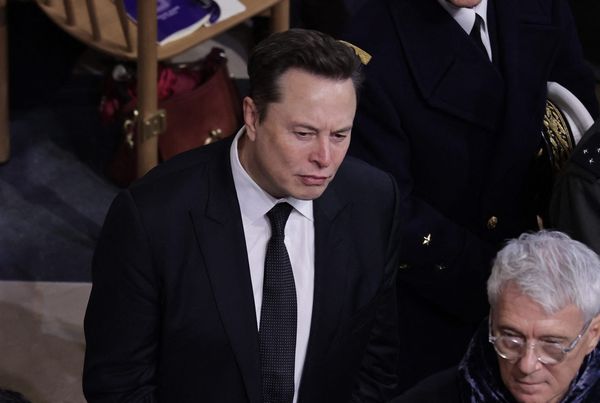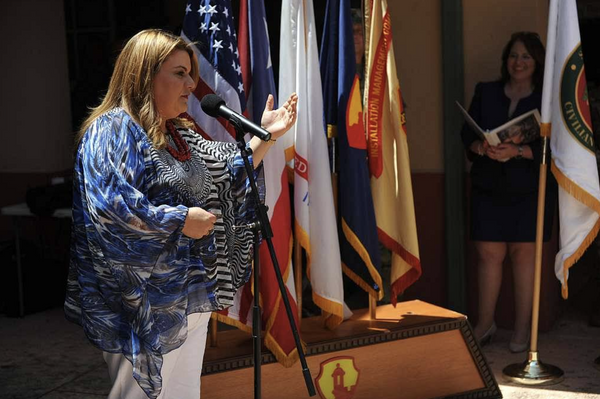
1m31.447s. The fastest lap of the 2005 Bahrain Grand Prix, set by Pedro de la Rosa, remains the official lap record at the Sakhir circuit - something the Spaniard will boast about whenever the opportunity arises. And it doesn't take him even a second to name the McLaren MP4-20 his favourite car of all time.
The McLaren of the 2005 season was a formidable weapon in the hands of Juan Pablo Montoya and Kimi Raikkonen, winning 10 of the 18 races it contested in F1 that year. Yet both titles went to Fernando Alonso and Renault.
"It's definitely the fastest car I've ever driven," says de la Rosa as we sit down with the former McLaren test and race driver in the Aston Martin hospitality suite almost 20 years later. "It was the last V10 car, with the Michelin tyres. It was just a super fast car. Great engine in the Mercedes, but most of all amazing aerodynamics. It was an extremely stable car and it was incredibly good with the tyres."
However, the Bahrain race, where he finished fifth, was de la Rosa's first and last for McLaren that year. At the San Marino Grand Prix, it was Alex Wurz who was at the wheel of Montoya's MP4-20.
"Alex was the nominated reserve driver," explains de la Rosa, previously a veteran of Arrows and Jaguar, "but he couldn't really fit into the car. They had to make some modifications to the fire extinguisher and I think his elbow clearance wasn't good enough, so he couldn't really steer and feel comfortable inside the car. So I got the chance in Bahrain.
"It was an incredible feeling. It was the first time I drove a competitive car in F1. The problem was that for the next race in Imola, they had already made changes for Alex. But the team always said that we would give an opportunity to me, then to Alex and then, if Juan Pablo could not recover for Barcelona, it would be my turn again."

Yet, de la Rosa was not destined to start his home race. Montoya returned to action at the Spanish Grand Prix, deciding after Friday's sessions that he was fit enough to race. De la Rosa was on standby, ready to jump into the cockpit at any moment, as he also drove the third car in the first practice session - but the call never came.
"If you remember, we could use a third car on Friday - and I was fastest in practice," he recalls. "And then I was just hoping that Montoya would decide that he wasn't ready to race. But he decided to continue. And that was really tough. But anyway... it was his car. And we had a fantastic season. I was lucky enough to test the car every week."
It was arguably the best car that year, designed by the likes of Adrian Newey, Paddy Lowe, Pat Fry, Peter Prodromou...
"We had pit stops, but only to refuel. The tyres had to last the whole race and we were doing the fastest laps towards the end - it was amazing how consistent those tyres were"
Pedro de la Rosa
"Heavyweights!" exclaims de la Rosa. "You know, they were really... they are still great designers. And it was just such a great car! Everything was very well integrated. I would say it was the fastest car on the grid, faster than the Renault. But we were beaten by Fernando, mainly because of his consistency and also the lack of reliability on our side. Reliability was the only weakness of that car, really."
It was probably two races, at Imola and Hockenheim, that cost Raikkonen the title that year. He retired from the San Marino Grand Prix after just nine laps with a driveshaft problem.
Had the Finn been able to finish the race he had started from pole position, Alonso's now legendary defensive drive against Michael Schumacher would most likely have turned into a battle for second, as Raikkonen was by far the quickest that weekend. Then history repeated itself at the German Grand Prix: again starting from pole position, Raikkonen led until lap 35 when he retired with a hydraulic failure.
"There were many races that we should have won, but we never did," shrugs de la Rosa, who was called up by McLaren again in 2006 following Montoya's defection to NASCAR, taking his only podium finish at the Hungaroring in 2006. "Also at the Nurburgring, where he was leading until the last lap and then the suspension broke. But there he had a big flat spot, so it was just unfortunate."

McLaren never really got on top of reliability, but by the end of the championship, the MP4-20 was undoubtedly the fastest car on the grid, with Raikkonen and Montoya winning seven of the last nine races of the year. Not least thanks to de la Rosa and Wurz.
"We also developed the car together with Michelin," recalls the Spaniard, "because in those days we had one set of tyres for the whole race. We had pit stops, but only to refuel. The tyres had to last the whole race and we were doing the fastest laps towards the end - it was amazing how consistent those tyres were."
That exact lap record in Bahrain came on lap 43 of a 57-lap race.
"There was no tyre management in those days," de la Rosa laughs. "The only thing the engineers would tell you was 'don't flat spot the tyres' - and that was it! Otherwise, you could push every lap to the limit. And it was a fantastic feeling.
"We also managed to develop the tyres around our car, which was something unique. Nowadays, you're given a tyre and you have to deal with it, you just choose between compounds. But back then you could choose your construction too - and that's where we were a bit better than Renault because Renault had a very rearward weight distribution.
"It was like a bit of a dragster, that car. So basically all the weight was on the rear axle. And therefore they needed a very weak front because the front was very nervous."
The performance swing clearly came in the middle of the season, not least because the FIA famously issued a technical bulletin outlawing mass dampers.
"The mass damper worked particularly well on the Renault because of its weight distribution," explains de la Rosa. "On the other cars, it was a very small advantage and that's why some teams pushed so hard to have it banned because they knew it was an advantage that Renault had over all of us. It was not that their mass damper was better, it was that the mass damper only worked on their car. But then, because of the weight distribution, we had a Michelin tyre designed around our car.

"We needed a very strong front and Michelin came up with a construction that gave more steering capability - and we ran that front tyre. Renault could not run it because they had this rearward weight distribution and the front was already too strong. So I think that gave us a bit of an advantage towards the end of the season."
Alonso still ran away with the title thanks to an amazing run of podiums in the final third of the season, but de la Rosa has every reason to be proud of his work, together with Wurz, to make the car faster.
"It was physically very tough," he recalls the testing routine. "Just the acceleration and the g-forces through the corners, it was very demanding. And they were always very intense sessions because we were basically always running new sets of tyres. Every time you did a run it was a new set - so there were no slow laps, just push, push, push. So after a couple of days like that, you were physically totally exhausted.
"After being exhausted in the morning it was like 'oh, the afternoon is easy, it's the V8 test' - because that difference of 200 horsepower made such a massive difference physically!"
Pedro de la Rosa
"I remember at the end of the season we also had the V8 tests. Before it was introduced, as a team we were testing the MP4-20 with the V10 engine, but we had an engine map that simulated the V8. So we would do a morning test with the V10, 930bhp - and then we would change the map to one that just reproduced a power curve similar to the V8, which meant you had 200bhp less or something like that.
"And I remember after being exhausted in the morning it was like 'oh, the afternoon is easy, it's the V8 test' - because that difference of 200 horsepower made such a massive difference physically! With the V10 you could not recover from corner to corner, but with the V8 you had that extra half a tenth or a tenth, and it just let your pulse go down.
"So I remember thinking, 'Oh, thank God, we're on the V8 now'. It was very, very demanding. But it was a fantastic experience. You learned so much about the car... Yeah, it was a very interesting era for test drivers!"








